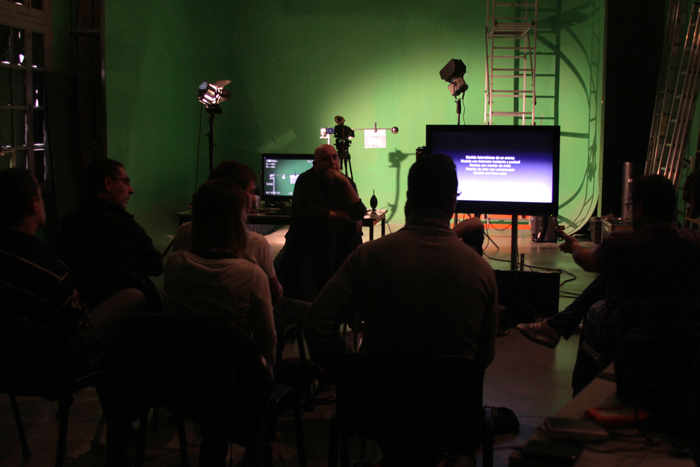News
Evaluation of the lighting and postproduction of chroma key course
On October 27th we attended the course on lighting and postproduction of chromas, organized by 709 Media Room.
With a duration of eight hours and two great professionals at the controls, we were able to learn the keys to the creation and embedding of chromas working with the current raw and log.
The day was divided into two parts (as the name itself indicates), so the morning was dedicated to everything related to lighting. The person in charge was Rafa Roche, director of photography specialized in digital cinema and stereoscopy.
We started with a theoretical block on recording (or what would be the ideal way to do it) and chroma key integration. Rafa taught us how to use image metering tools such as waveform or vectorscope to identify if our exposure and chroma key color are the right ones.
Thanks to certain camera settings and circuits (such as the matrix) we can modify certain parameters to “help” the camera to achieve a more suitable shade of green or to facilitate the post-production process.
Then we move on to the lighting devices, which ones are usually used for this type of shots in today’s audiovisual industry, as well as the defects and virtues of each one of them.
Once we were clear about the theory, we moved on to practice. After recording a couple of exteriors to be able to use them in the integration, we went to the set and set up a lighting that worked with the background we had just obtained. With the help of a light meter we measured the exposure at different points of the chroma key and Rafa showed us how far the differences can go, as well as how much to expose both the characters and the green.
In all the practices there is a collaboration between the assistants and the teacher, without the need to stick to a closed script, but on the contrary; there is always the possibility of trying out some of the students’ proposals.
From the hand of José Carlos Panadero we come to the second part of the course, postproduction. José Carlos is an Adobe Certified Instructor, Apple Mentor Trainer and postproducer in spots for well-known brands.
We settled in one of the CES classrooms, equipped with an iMac for each student where we could perform the exercises with a good performance. So we started experimenting with the recordings we had made during the morning, using Adobe After Effects software together with the Keylight plugin from The Foundry (although José Carlos named several others, the intention was to learn the basic operation in a single software).
Step by step he explained the tools available to perform the extraction and improve the integration. We started with a simple example to increase the complexity later, adding masks, tracking, solving problems and receiving recommendations on certain workflows.
Once the concepts were clear we were able to have a separate time to practice and familiarize ourselves with the software and its functions. In addition, the attendees were able to take the material of the practices with them on their own hard disk in case they want to continue working at home or simply keep it.
Together with Rafa and José Carlos, Luis Ochoa was present throughout the day, making contributions and sharing his technical knowledge whenever required, which is an added value.
Couldn’t attend and still want to come? In this link you can see all the information about the contents and how to sign up for future editions of the course.






